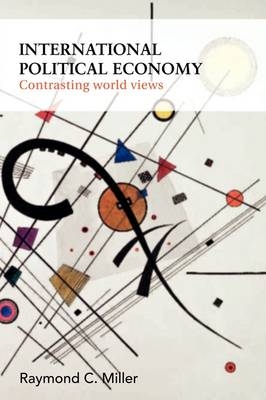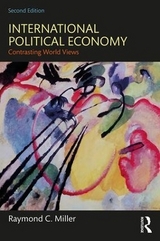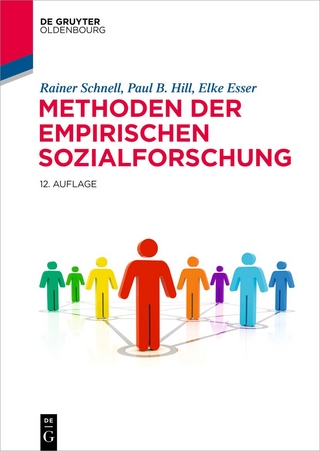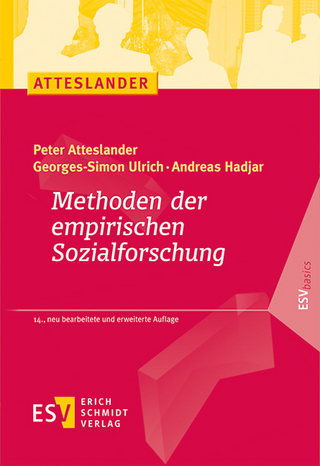
International Political Economy
Routledge (Verlag)
978-0-415-38409-4 (ISBN)
- Titel erscheint in neuer Auflage
- Artikel merken
This textbook is the perfect short introduction to the fundamental theories and issues of international political economy (IPE).
Written in a concise and accessible style, the text equips students with the necessary skills and knowledge to understand this complex and fascinating area. Engaging with both classical theories and the main contemporary debates, this is the ideal starting point for the study of IPE.
The text introduces students to the three main theoretical approaches in IPE: free market, institutionalist and historical materialist. The strengths and weaknesses of the theories are then illustrated by a series of fascinating applied case studies in such core areas as international trade, finance, transnational corporations, development and the environment.
Combining clear historical and theoretical explanation with detailed empirical examples this is essential reading for students of international political economy, global governance and international economics.
Raymond C. Miller has been national president of two professional associations: the Association for Integrative Studies and the Society for International Development. He was founding editor of Issues in Integrative Studies. Professor Miller served as a member of the faculty at San Francisco State University for 43 years, where he is now Professor Emeritus of International Relations and Social Science.
1. The Field of Study Known as 'IPE' 1.1 Long-Distance Trade 1.2 First Global Economy 1.3 Mercantilism 1.4 Triangular Trade 1.5 Industrial Revolution Adam Smith 1.6 Key Ideas 1.7 Father of Economics 1.8 Ricardo, Marx and Classical Political Economy 1.9 Globalization and the Revival of IPE 2. Formal Definition 2.1 Strategy of Text 2. The Market Model and World View 2.2 Neoclassical Economics vs. Classical Political Economy 2.3 Premises of the Market Model 2.4 Interactions Within the Market Model (Diagram) 2.5 Roles 2.6 Supply and Demand 2.7 Counter Flows 2.8 Capital Investment 2.9 Bonds and Stocks 3. Logical Consequences of the Market Model 3.1 Answers to Basic Economic Questions 3. Market Applications National Income and Product Accounts 3.2 International Trade and the Market 3.3 Comparative Advantage (Bar Graph) 3.4 Neo-Mercantilism 3.5 World Trade Organization 3.6 Balance of Payments 3.7 Foreign Exchange and the International Monetary Fund 3.8 Gold Standard and the Bretton Woods System 3.9 Monetary Policy 4. Invention of Banks 4.1 Fractional Reserve Banking System (Expansion Diagram) 4.2 Federal Reserve System 4.3 Instruments of Monetary Policy 4.4 Third World Debt Crisis 4.5 Monetarism 4.6 The Keynesian Revolution and Fiscal Policy 4.7 Low Level Equilibrium Trap vs. The Conventional Market Model 4.8 Keynesian Solution for the Great Depression 4.9 Compensatory Fiscal Policy and its Problems 5. World Bank 5.1 Global Connections (Diagram) 4. The Multi-Centric Organizational (MCO) World View 5.4 The Veblen and Polanyi Institutionalist Challenge to the Market Model 5.5 The Sraffa Neo-Ricardian Critique 5.6 The Galbraith Critique and Alternative 5.7 The Multi-Centric Organizational Model 5.8 Premises 5.9 Interactions 6. Outcomes 6.1 Summary Comparison Between the MCO and Market Models 6.2 A Better Way? 5. The MCO World View – Critical Applications 6.3 Problems of 'Free Trade' (Prebisch, Batra, Sraffa, etc.) 6.4 The Global Casino (Strange, Ingham, etc.) 6.5 Ecological Degradation (Daly, etc.) 6.6 Corporate Colonialism (Korten, etc.) 6.7 The MCO Reformist Agenda 6. The Classical Marxist Model and World View 6.8 Background 6.9 Premises of the Classical Marxist Model (Dialectical Materialism) 7. Interactions of the Classical Marxist Model 7.1 Mode of Production 7.2 Historical Materialism 7.3 Capitalist Mode of Production 7.4 Outcomes 7.5 Capitalist Mode of Production 7.6 Classical Marxist Model 7. Contemporary Applications of Marxist Analysis 7.7 Disclaimers (Stalinism, World Systems Theory, Dependency Theory) 7.8 Imperialism: Old and New (Lenin and Gramsci) 7.9 Regulation Theory (Social Structures of Accumulation) 8. Feminism and Marxism (V. Spike Peterson) 8. Clashing Views on Central Issues: A Summation 8.1 International Trade and Trade Agreements 8.2 Market Approach 8.3 MCO Approach 8.4 Marxist approach 8.5 Transnational Corporations 8.6 Market Approach 8.7 MCO Approach 8.8 Marxist Approach 8.9 Global Finance 9. Market Approach 9.1 MCO Approach 9.2 Marxist Approach Environment and Development 9.3 Market Approach 9.4 MCO Approach 9.5 Marxist Approach 9.6 Glossary 9.7 Index
| Erscheint lt. Verlag | 18.7.2008 |
|---|---|
| Zusatzinfo | 7 Line drawings, black and white; 13 Halftones, black and white; 16 Tables, black and white; 20 Illustrations, black and white |
| Verlagsort | London |
| Sprache | englisch |
| Maße | 156 x 234 mm |
| Gewicht | 448 g |
| Themenwelt | Geisteswissenschaften ► Philosophie |
| Sozialwissenschaften ► Soziologie ► Empirische Sozialforschung | |
| Wirtschaft ► Volkswirtschaftslehre ► Makroökonomie | |
| Wirtschaft ► Volkswirtschaftslehre ► Wirtschaftspolitik | |
| ISBN-10 | 0-415-38409-5 / 0415384095 |
| ISBN-13 | 978-0-415-38409-4 / 9780415384094 |
| Zustand | Neuware |
| Haben Sie eine Frage zum Produkt? |
aus dem Bereich



